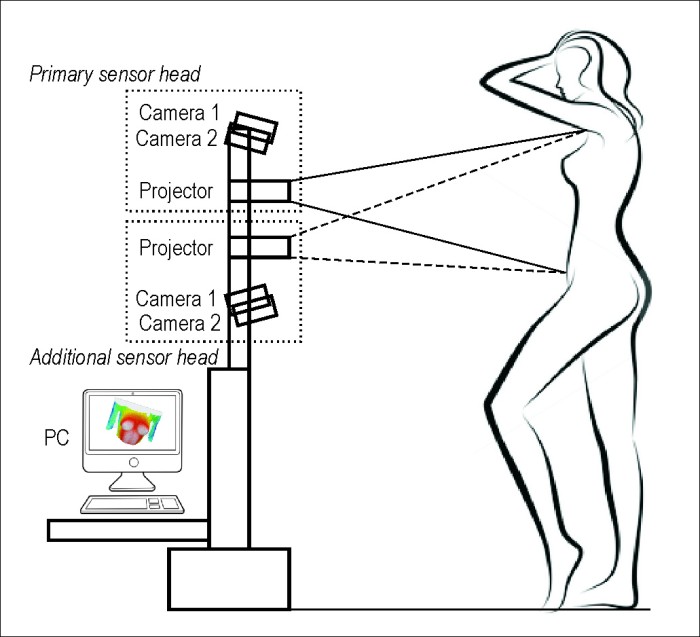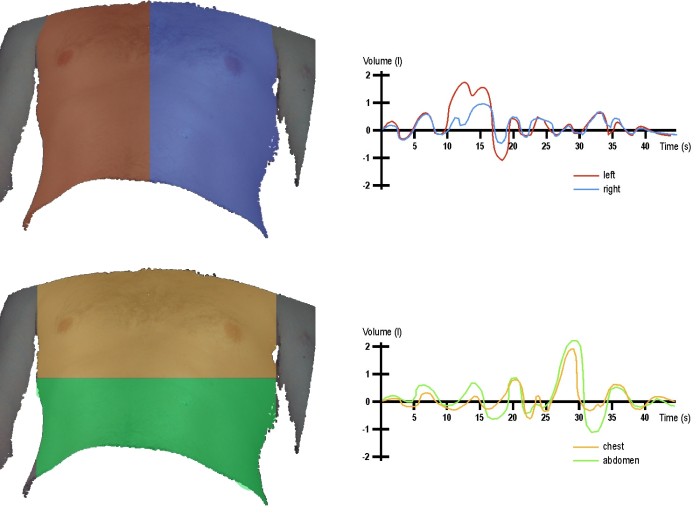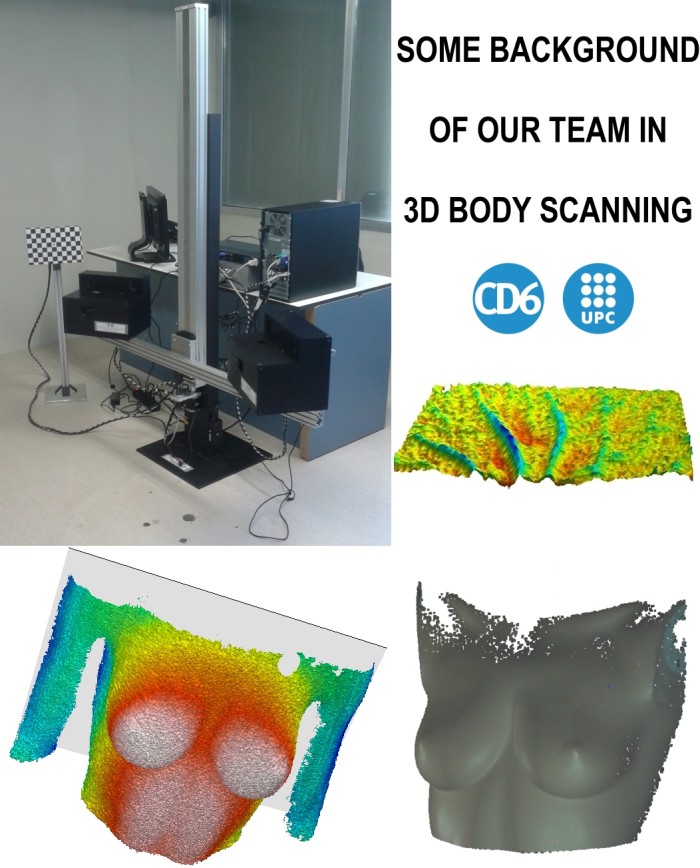Bijdragen € 5
Acknowledgement for supporting
All contributions are important. If you want to help us with this contribution, your name will be on the section of acknowledgments on the website of InnoEPOC
> 02 Co-financiers
We use own and third party cookies to improve your user experience and our services, analyzing users' browsing in our website. If you continue browsing, we will consider that you consent to its use. You can get further information in our Cookies Policy
InnoEPOC
 Min.
Min.
 Opt.
Opt.
 Terrassa
Terrassa
All contributions are important. If you want to help us with this contribution, your name will be on the section of acknowledgments on the website of InnoEPOC
We will send you 3 exclusive videos in HD showing the making-off of the instrument in 3 phases of development: initial (design process), intermediate (construction of the instrument), and final (instrument running) + In the credits of the 3 videos will appear your name as a funder + Previous Reward
A virtual tour to our Research Centre, where we will arrange a videocall to show you our laboratories and facilities, introduce the instrument developed, and comment with the researchers of the project whatever you want to know in regard to the project + Previous Rewards
A visit to our Research Center in Terrassa where the researchers who work in the project will show you our Center, introduce the instrument so that you can touch it and see it working, and discuss those issues that personally you want to know concerning the project (Note: travel and accommodation expenses are not included) + Previous Rewards
If you are a person or institution motivated by the project, you will become our Bronze Sponsor. Your name and logo/brand (if any) will be mentioned as Sponsor in all online, media and scientific communications associated with the project + You will be in personal contact with the project team by phone and email + We offer you to personally present the project in your location and make you a training about the operation and performance of the instrument (Note: travel and accommodation expenses are not included) + Previous Rewards
This includes all the benefits of Bronze Sponsor + Offers you to test the prototype developed for a limited time to be agreed (Note: not included the cost of travel and accommodation as well as the shipping expenses of the prototype if necessary)
If you are a person or institution very motivated and interested by the project, with this contribution you will become the Gold Sponsor. Your name and logo/brand (if any) will be mentioned as the Main Sponsor in all online, press and scientific communications related to the project. This category includes all the benefits of Silver Sponsor + Allows you to participate in the development of the prototype by choosing up to 2 customized features that we will include and will be agreed between you and us
Development of a noninvasive instrument for measuring the breathing pattern of patients with chronic obstructive pulmonary disease
 Materiaal
Materiaal
|
Minimum | Optimum |
|---|---|---|
|
Projector 1 unit minimum
Standard (i.e. not custom made). Based on DLP technology, high projection rate (>100Hz), with inputs / outputs to interact with external cameras, with low power consumption and long life LED light source. Compact.
|
€ 1.500 | |
|
Cameras 2 units minimum
2 high-speed scientific cameras (>200 fps) @ VGA resolution. Progressive CCD sensor. IEEE 1394b or GigE interface. Internal FIFO memory. These high-speed cameras are needed to enable the 4D measurement (motion analysis).
|
€ 3.000 | |
|
Lenses 2 units minimum
2 fixed focal length lenses for the cameras specified in the minimum cost. C mount. With aperture control and manual focus. Aperture and focus positions lockable.
|
€ 480 | |
|
Mechanical structure minimum
Mechanical structure of the instrument (i.e. the skeleton) made of aluminium profiles. We include the cost of the material needed to build the skeleton of the prototype with a single measuring head.
|
€ 1.000 | |
|
Standard mechanical parts
Set of basic mechanical parts necessary to build the prototype, including screws, nuts, washers, other small machined parts, etc.
|
€ 300 | |
|
Connection cables
Cables needed to connect the cameras and projector/s on the computer.
|
€ 50 | |
|
Projector 1 unit extra
Optimally, we include one more projector of the same features as the projector pointed at the minimum cost, to develop the instrument with 2 sensing heads for scanning the chest from a top view (with one of the heads made of 1 projector + 2 cams) and a bottom view (with the other head made of 1 projector + 2 cams) to avoid unwanted shadows created by the breast, which might be particularly relevant in the case of women.
|
€ 1.500 | |
|
Cameras 2 units extra
2 additional cameras with the same characteristics as those indicated in the minimum cost to be included in the second sensing head, for the same reason stated in the additional projector description.
|
€ 3.000 | |
|
Lenses 2 units extra
2 extra lenses similar as those described at the minimum cost to be included in the second sensing head, for the same reason stated in the additional projector description.
|
€ 480 | |
|
Mechanical structure extra
Additional kit of aluminium profiles to build the mechanical structure of a second sensing head.
|
€ 170 |
 Infrastructuur
Infrastructuur
|
Minimum | Optimum |
|---|---|---|
|
Web page
Domain registration and web hosting
|
€ 20 |
 Taak
Taak
|
Minimum | Optimum |
|---|---|---|
|
Construction of the device
We include the work of building the prototype: assembling the different hardware components and make them work together.
|
€ 1.200 | |
|
Development of the control software
We include the work of creating and implementing the code to handle the prototype, including basically the algorithms for getting 4D measurements and the corresponding spirometric parameters, and graphically visualizing the results.
|
€ 1.900 | |
|
Testing of the device
We include the work of testing separately and together the different components that make up the prototype, finally including some preliminary tests of the performance when scanning persons in 4D.
|
€ 900 | |
| Totaal | € 10.350 | € 15.500 |
InnoEPOC is a scientific-technological project that proposes the development of a low cost medical device prototype to measure without contact the breathing pattern globally and locally, reporting the breathing behavior of the different lung zones.
How is the instrument?
Is a low cost prototype for measuring in 4D (3D topography + time) the thoracic and abdominal surface during breathing. From the 3D topographies along time (t), the air volume (V) and airflow (f = V / t) are obtained. In the simplest configuration, the device's sensing head is based on one projector and two cameras located on either side of the projector. The patient is illuminated with a pattern of light stripes projected onto the chest and abdomen. The pattern is deformed according to the shape of the patient. From the images of the deformation, the correlation map is computed and finally the 3D topography is obtained by triangulation.
Who will benefit from the project?
The innovative instrument is intended to benefit patients with chronic obstructive pulmonary disease (COPD), which is a disease with a high incidence worldwide. The instrument is envisaged to allow a more comfortable, more accurate and more complete diagnosis of respiratory behaviour of COPD patients, compared to traditional spirometers.
The measurements provided by the instrument will enable a better diagnose and monitoring of patients affected by COPD disease. Consequently, it is expected an improvement in the early diagnosis of the disease and the possibility of more personalized medical treatments.
Spirometers are the gold stardard instruments for recording the respiratory capacity, but have three important limitations such as the contact with the patient who has to cover the nose with a clip and breathe through a mouthpiece, the limitation of a global inspection without the possibility of getting results of individual subareas, and the lack of a graphical representation of the breathing movement to visualize potentially abnormal areas in an intuitive way.
We propose to build a prototype which complements spirometers, but overcomes the abovementioned limitations, providing a better performance to measure the breathing capacity of COPD patients!.
The main features of the prototype are:

COPD is a degenerative disease that causes a progressive decrease of respiratory capacity, leading to a gradual decline in physical activity and quality of life of patients. It is one of the diseases with the greatest impact worldwide, with high rates of disability and mortality. Currently, COPD affects 10% of the people above 40 years old in our country. As far as it is a degenerative disease, medical treatments focus on slowing the progression of the disease and improving the quality of life of patients.
Why this project?
The proposed instrument will help to better assess the breathing capacity of COPD patients. Consequently, it should benefit on two issues of particular importance:
1.) Increasing the rate of early detection of the disease, which is very important as far as it is in the early stages of the disease where medical treatments are more effective and patients experience more improvements.
2.) The introduction of more personalized medical treatments both in type and dose depending on the patient's condition reported by the instrument. Also, the instrument will allow a better understanding of the patient's response to a given treatment and a better monitor of the evolution.
Who are the targets?

The technical goal of the project is to develop a prototype based on low cost components for measuring in 4D the breathing capacity of COPD patients.
Therefore, in the short to medium term we want to design and build the instrument (hardware and software), reaching a fully operational prototype. Also within this period, we want to establish solid contacts with clinicians (pneumologists, pulmonologists, respiratory rehabilitators, etc.) who might be interested from the specifications offered by the instrument, and could collaborate with us in their statement to make a prototype as helpful as possible in the clinical practice.
Also in the short term we want to make a website to share with the internet community how the project is going by publishing text documents, images, videos, faqs, etc.
In the medium to long term we hope that the InnoEPOC prototype developed can be tested in the clinical setting through an initial pilot with COPD patients, with the collaboration of clinicians and health institutions interested. In the long term, we hope that the results of InnoEPOC will contribute to better understand the effects of COPD on the health of patients, leading to more customized medical treatments for each patient based on their health status and response to treatment, and ultimately to improve the quality and extend the life expectancy of COPD patients.

We are a research team working in the field of optical metrology (measurement of objects by light) within the Centre for Sensors, Instruments and Systems Development at the UPC (http://www.cd6.upc.edu). We are a multidisciplinary team of experts in optical engineering , electronics, mechanics and computer science. We have more than 5 years of experience in developing prototypes for 3D measurement of the human body based on active stereovision technique. Up to date we have designed and built two 3D scanning prototypes, one with a very high resolution and another with a large field, that were successfully applied to the measurement of facial wrinkles and body volumes, respectively. Currently, our interest is to evolve the technique towards the 4D (real time) while keeping the low cost, and apply it to provide innovative solutions in the biomedical field for improving the quality of life of patients, as in the case of COPD patients in this project.
Here are the members of the team that will develop the project:
Miguel Ares (PhD), postdoctoral researcher with extensive experience in the development of 3D scanners based on active stereovision for digitizing the human body. He will be the project coordinator, and will be in charge of designing conceptually the prototype, develop the control programs for getting 4D measurements, and implement the GUI.
Santiago Royo (PhD), professor and researcher with a wide experience in the management of research projects in optical metrology. It will support the management of InnoEPOC, providing expertise in the various stages of the project development.
Jordi Riu, telecommunications engineer and electrical engineer. He will be mainly involved in the implementation of programs to calculate the airflow breathed and compute the spirometric parameters globally and by regions.
Francisco Azcona, mechatronic engineer specialized in robotics. He will be responsible for doing the detailed mechanical design of the prototype.



Acknowledgement for supporting
All contributions are important. If you want to help us with this contribution, your name will be on the section of acknowledgments on the website of InnoEPOC
> 02 Co-financiers
Exclusive videos of the making-off of the instrument
We will send you 3 exclusive videos in HD showing the making-off of the instrument in 3 phases of development: initial (design process), intermediate (construction of the instrument), and final (instrument running) + In the credits of the 3 videos will appear your name as a funder + Previous Reward
> 03 Co-financiers
Virtual presentation of the instrument
A virtual tour to our Research Centre, where we will arrange a videocall to show you our laboratories and facilities, introduce the instrument developed, and comment with the researchers of the project whatever you want to know in regard to the project + Previous Rewards
> 01 Co-financiers
Visit to our facilities
A visit to our Research Center in Terrassa where the researchers who work in the project will show you our Center, introduce the instrument so that you can touch it and see it working, and discuss those issues that personally you want to know concerning the project (Note: travel and accommodation expenses are not included) + Previous Rewards
> 01 Co-financiers
Bronze Sponsor
If you are a person or institution motivated by the project, you will become our Bronze Sponsor. Your name and logo/brand (if any) will be mentioned as Sponsor in all online, media and scientific communications associated with the project + You will be in personal contact with the project team by phone and email + We offer you to personally present the project in your location and make you a training about the operation and performance of the instrument (Note: travel and accommodation expenses are not included) + Previous Rewards
> 00 Co-financiers
Silver Sponsor
This includes all the benefits of Bronze Sponsor + Offers you to test the prototype developed for a limited time to be agreed (Note: not included the cost of travel and accommodation as well as the shipping expenses of the prototype if necessary)
> 00 Co-financiers
Gold Sponsor
If you are a person or institution very motivated and interested by the project, with this contribution you will become the Gold Sponsor. Your name and logo/brand (if any) will be mentioned as the Main Sponsor in all online, press and scientific communications related to the project. This category includes all the benefits of Silver Sponsor + Allows you to participate in the development of the prototype by choosing up to 2 customized features that we will include and will be agreed between you and us
> 00 Co-financiers
We will be really happy to have the collaboration of healthcare specialists in respiratory system who work with COPD patients (pulmonologists, pneumol
We are looking for web designers and programmers to help us with the development of the project's website. Any help to make it attractive, complete an
We need people motivated by the project to widespread it either on-line and off-line in order to achieve a strong visibility and find potential funder